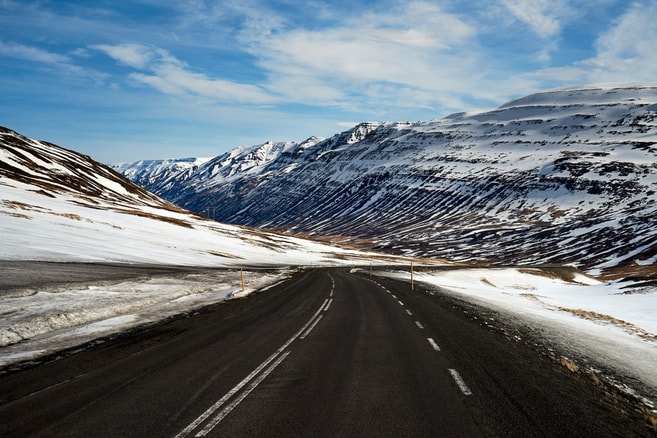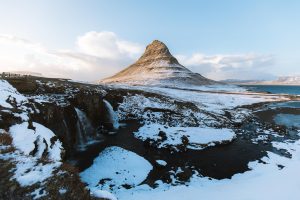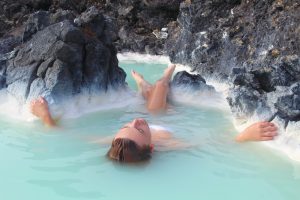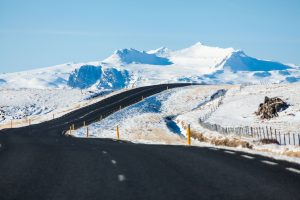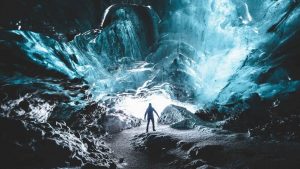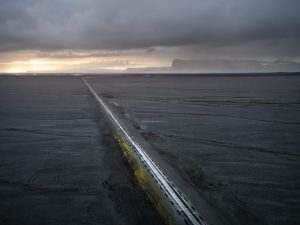Purpose
This Privacy Policy applies to Flatahraun 31 (trading as Iceland Advice) and the “Service” (as the context requires “We”, “Our” or “Us”) in relation to Our operations in Iceland. This policy explains how We handle personal information and comply with the requirements of the Personal Data Act set by the Icelandic Data Protection Authority (DPA) and the General Data Protection Reform (GDPR). This covers all of Our “Apps” “Websites,” “Products” and “Services” you “Customers” may receive pursuant these and our other “Terms”. If you have any further questions in relation to this policy, please contact Us: [email protected].
This policy relates to our collection and handling of personal information that is covered by the Privacy Act. It is not intended to cover categories of personal information that are not covered by the Privacy Act. The information is gathered via number of sources including but not limited to:
- our App;
- our Websites (including but not limited to icelandadvice.is and snorkelingsilfra.is);
- our social media (including but not limited to instagram.com/icelandadvice – twitter.com/icelandadvice – medium.com/Iceland-advice / googleplus.com/icelandadvice – pinterest.com/icelandadvice);
- banners, banner adds;
- cookies from our Websites;
- any software; and
- any other way information is collected manually or electronically.
By using these Products, Services, and Website you are accepting the practices described in this Privacy Policy. These practices may be changed from time to time and any changes will be posted and changes will only apply to activities and information on a going forward basis. You are encouraged to review the Privacy Policy whenever you visit the Website to make sure that you understand how any personal information you provide will be used.
Why we may collect information
We may collect information including personal information and data. We are committed to safeguarding this information. Unless expressively requested we will only collect, store and process information in the following Privacy Policy. The following Privacy Policy has also been developed to adhere to best practice and standards. Further and more detailed Terms may be expressed by us from time to time including matters of privacy. These will be communicated to you and need to be considered in light of this Privacy Policy.
Active Information Collection
Personal information may be collected through these Products, Services, and Website actively. Active information collection includes but is not limited to:
- posting product reviews in line with our Product Review Policy;
- through a purchase of a Product or Service;
- complete any forms or surveys;
- subscribing to emails, alerts or Services;
- previously supplied or provided information;
- through our Plan Your Trip form on our website;
- by contacting us directly; and
- participating in any deals, offers or specials.
Passive Information Collection, IP addresses & Cookies
Per standard industry practice, we may collect information about your computer, including, where available, your IP address, operating system and browser type for system administration and to report aggregate information to our advertisers. This is statistical data about our Customers’ browsing actions and patterns, and does not identify any individual.
Our Website uses cookies to distinguish you from other Customers of our Website. This helps us to provide you with a good experience when you browse our Website and also allows us to improve our Website.
The access points may be by visiting the Website directly; via another website; or from an email sent to you from us. By accessing from any of these points you consent to the collection of such data and personal information.
Where we store your personal information
The data that we collect from you may be transferred to and stored in the Netherlands and accessed in Iceland and overseas where required. In this case, where data is stored overseas, it may also be processed by staff operating outside Iceland who work for us or for one of our suppliers. Such staff maybe engaged in, among other things, the fulfillment of your Service, the processing of your payment details and the provision of support services.
The data and personal information collected is used and disclosed for the following primary purposes:
- to provide the Services;
- to respond to enquires;
- to maintain a customer relationship;
- to register and receive new Customers or Customers;
- to fulfill obligations in other Terms such as the Returns Policy;
- to maintain the Services and Website;
- improve the browsing experience of the Website;
- provide third parties with statistical (non-individual) information about our Customers only in line with this Privacy Policy and provided that no individual Customers are identified (including but not limited to Hotjar, Google Tag Manager, Google Analytics, Google Ads, Sumo.com, Intercom Chat, Facebook Pixel);
- for the purposes of why it was collected pursuant to this Privacy Policy;
- to handle enquiries and complaints from Customers and Customers;
- to keep the Website secure and assist in preventing fraud;
- to provide updates, deals and newsletters; and
- to improve our Products, Services, and Website.
Uses made of the information
We use information held about you in the following ways:
- to provide you with information, Products or Services that you request from Us or which We feel may interest you, where you have consented to be contacted for such purposes;
- to ensure that content from Our Website is presented in the most effective manner for you and for your computer;
- to carry out Our obligations arising from any contracts entered into between you and Us;
- to allow you to participate in interactive features of Our Products and Services when you choose to do so; and
- to notify you about changes to Our Products and Services.
We may also use your data, or permit selected third parties to use your data, to provide you with information about Services and Products which may be of interest to you and we or they may contact you about these.
Information we may collect from you
We may collect and process the following data about you:
- contact information;
- registration information;
- payment processing details;
- Credit-related identification information such as name, date of birth, current or previous address, name of current employer, drivers license number, Internet Protocol (IP) addresses and unique device identifiers (UDIDs);
- contact preferences;
- social media photographs of you;
- user login information;
- your gender and marital status;
- where you are staying in Iceland for pick-up;
- sensitive information per the Sensitive Information section in this Privacy Policy;
- personal interests;
- height, weight and shoe size and medical information for snorkeling trips;
- originating country;
- number of travelers and ages;
- length of trip and desired outcome;
- details of your visits to Our Website including, but not limited to, traffic data, location data, weblogs and other communication data, whether this is required for our own billing purposes or otherwise and the resources that you access;
- location data;
- information about your experience with our Services;
- product review data in line with our Product Review Policy;
- if you contact Us, We may keep a record of that correspondence;
- we may also ask you to complete surveys that We use for research purposes, although you do not have to respond to them; and
- any other personal information requested by our Services.
Product Review Policy
Our Services included a product review section. These reviews are useful for other potential Clients and Customers. We aim to provide this service complimentary for all Clients and request you assist in following the below terms.
Terms of product reviews include but are not limited to:
- Do not leave duplicate reviews;
- Do not post outside or irrelevant links in reviews;
- Do not use the review for self-promotion;
- Do not leave personal information or details;
- Do not leave hateful, harmful or hurtful reviews;
- Do not leave insulting reviews;
- Do not misspell products where possible; and
- Do leave sufficient details and honest review information;
We reserve the right to:
- Edit or delete reviews as necessary;
- Request further information or proof;
- Verify if the Client has actually used the product; and
- Suspend or delete a Client account for breach of any of these Terms;
Sensitive information
Where you provide us sensitive information through these Services and Website we will only use the information for the purposes stated in this Privacy Policy. These may include political believes, religious beliefs and current personal views. We will only collect sensitive information with your consent. If we do share this information with third parties it will only be shared in line with this Privacy policy.
Disclosure of your information
We may disclose your registration information to any member of our group, which means our subsidiaries, our ultimate holding company and its subsidiaries (as the case may be).
We do not routinely disclose personal information to other organizations unless:
- required by law;
- We believe it necessary to provide you with a product or Service which you have requested;
- use or disclosure is permitted by this Privacy Policy;
- to protect the rights, property or personal safety of any member of the public or one of our Customers or in Our interests;
- some or all of Our assets or Our operations are or may be transferred to another party as part of the sale of some or all of Our business; or
- you give your consent.
We may also share non-personal, de-identified and aggregated information for research or promotional purposes. Except as set out in this policy, we do not sell or trade personal information to third parties or allow such third parties to use that personal information.
Protection of data
All information you provide to us is stored on our secure servers in the Netherlands and accessed in Iceland. Any payment transactions will be encrypted. Where we have given you (or where you have chosen) a password which enables you to access certain parts of Our Website, you are responsible for keeping this password confidential. We ask you not to share a password with anyone.
All information collected is secured via Secure Socket Layer (SSL). Unfortunately, the transmission of information via the internet is not completely secure. Although we will do our best to protect your personal data, we cannot guarantee the security of your data transmitted to Our Website. Any transmission is at your own risk. Once we have received your information, we will use strict procedures and security features to try to prevent unauthorized access.
Links to Other Websites
Our Service, Website, banners or ads may, from time to time, direct you to other websites or social media. If this occurs we cannot and do not endorse or approve their practices and content. Other websites are responsible for their own content and information collection and subject to the guidance of their own Privacy Policy. We do not accept any responsibility or liability for these policies. Please check these policies before you submit any personal data to these Websites. This Privacy Policy does not cover other websites.
Cookies related to these Services are covered with our Terms. However other websites may use cookies or tracking. It is recommended you review the other websites Privacy Policy in line with cookies, tracking and information storage.
Your rights
You have the right to ask us not to process your personal data for marketing purposes. We will usually inform you (before collecting your data) if we intend to use your data for such purposes or if we intend to disclose your information to any third party for such purposes. You can exercise the right at any time by contacting us at [email protected].
You have the right to ask us to provide you with any personal data we hold. We will provide you with such information provided that you:
- instruct us in writing;
- pay a fixed fee of ISK 1,100; and
- supply appropriate evidence of your identity.
We have the right to withhold such personal data to the extent permitable by applicable law.
How we collect and hold your personal information
We may collect your personal information through these Services and in accordance with this Privacy Policy or if it is otherwise lawful to do so. We may receive personal information from third parties in which case this information is also collected for the purpose of providing these Services pursuant to this Privacy Policy.
Commitment to data security
Your personal identifiable information is kept secure. Only authorized employees, agents and contractors (who have agreed to keep information secure and confidential) have access to this information. All emails and newsletters from this Website allow you to opt out of further mailings.
Others to view information
We may through these Services provide you the ability to post, comment or leave product reviews in line with our Product Review Policy. This information may be viewed and acted upon by others. It may be shared on other websites or social media. This information may become public information on an open forum. We are not responsible for any replication or distribution of this information.
Data Retention
To meet legislation guidelines we retain your information for as long as needed to provide you the Services. If you no longer wish to use the Services you can cancel your Service pursuant to our Terms on our Website. Following a cancellation, however, we may need to retain some information to meet legislation guidelines that survive the agreement of these Terms.
Children information
The purposes of this Privacy Policy and all of our Services are not directed to those under the age of eighteen (18). We will not collect information on those under this age when it is known to us. Those under age may only use the Services with approval or a parent or legal guardian.
Changing and updating information
Information collected and stored by us may be updated or changed if required. You can do this in writing by contacting us at [email protected]. Further, if deletion of information is required it needs to be completed in line with our Terms and this Privacy Policy. Legislative requirements may exist that require a longer retention period of this information.
Privacy Policy Survival
This Privacy Policy survives any cancellation of these Services or sale of this business by us. Your information may be disclosed to potential buyers and may form part of the assets being sold. If this occurs the Privacy Policy remains in place.
Contact
If at any time you want to know what personal information we hold about you, you may contact us by writing to [email protected].

